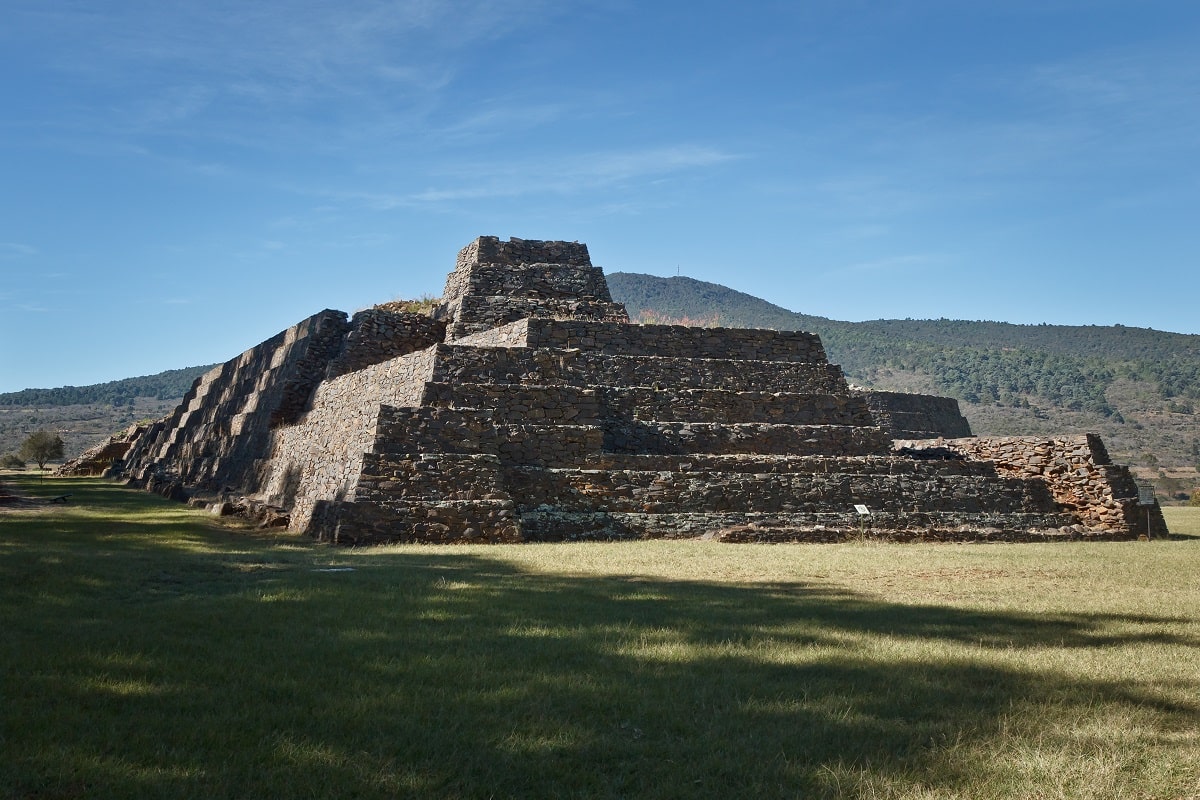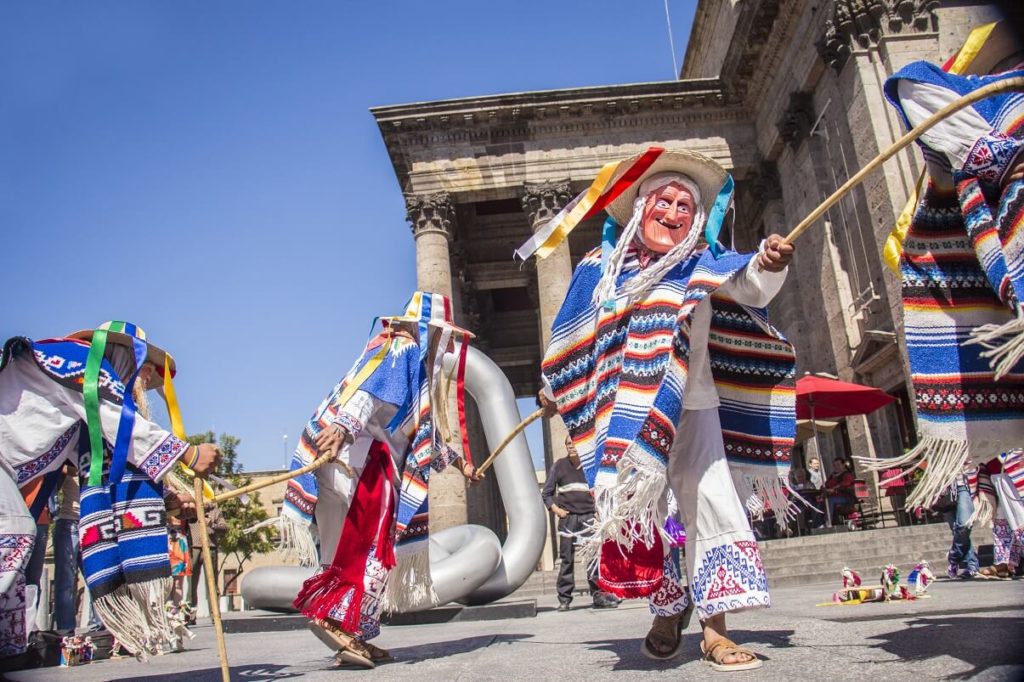El Purepecha is more than just a language or a cultural identity—it's a living, breathing piece of history that continues to inspire and captivate people around the globe. Imagine stepping into a world where traditions are still alive, where stories passed down through generations shape the way of life, and where every festival feels like a celebration of existence itself. This isn't just about learning a new language or exploring a new culture; it's about diving deep into the soul of a people who have resisted time and modernity to stay true to their roots.
You might be wondering, what makes El Purepecha so special? Well, buckle up because this journey will take you on a wild ride through the heart of Mexico, where the Purepecha people have carved out a niche for themselves in a world that often tries to homogenize everything. Their language, traditions, and resilience against colonial forces make them one of the most fascinating indigenous groups in the Americas.
But this isn't just a history lesson or a cultural tour—it's a call to action. In a world where languages and cultures are disappearing faster than ever, understanding and appreciating the Purepecha people is more important than ever. So, let's dive in and explore what makes El Purepecha such a vibrant and essential part of the global cultural landscape.
Read also:Hailee Steinfeld Nudes The Truth Behind The Clickbait Sensation
Table of Contents:
- The History of El Purepecha
- Understanding the Purepecha Language
- Purepecha Culture: A Tapestry of Traditions
- Resistance and Resilience: The Purepecha Way
- Purepecha Festivals: Celebration in Every Corner
- Purepecha Cuisine: A Feast for the Senses
- Artisanal Crafts: Purepecha Hands at Work
- El Purepecha in the Modern World
- Challenges Facing the Purepecha People
- Conclusion: Why El Purepecha Matters
The History of El Purepecha
El Purepecha, also known as Tarascan, has a history that stretches back thousands of years. The Purepecha civilization thrived in the region now known as Michoacán, Mexico, long before the arrival of the Spanish conquistadors. Unlike many other indigenous groups in the Americas, the Purepecha were never fully conquered by the Aztecs, making them one of the few civilizations to resist the powerful Mesoamerican empire.
In the 15th century, the Purepecha Empire reached its zenith, with a sophisticated system of governance, advanced metallurgy, and a thriving economy based on agriculture and trade. Their capital, Tzintzuntzan, was a hub of political and cultural activity, rivaling even the great cities of the Aztecs. But when the Spanish arrived, the Purepecha faced a new and formidable challenge.
Colonial Resistance
Despite the overwhelming force of the Spanish, the Purepecha people managed to resist colonization for a significant period. Their knowledge of the terrain, combined with their fierce determination, allowed them to hold out longer than many other indigenous groups. Even after the Spanish eventually gained control, the Purepecha continued to preserve their language, traditions, and way of life.
Understanding the Purepecha Language
El Purepecha is a unique language that belongs to the Macro-Mayan family, but it stands apart from other Mayan languages in many ways. It has its own distinct grammar, vocabulary, and phonetics, making it one of the most fascinating languages in the world. The language is still spoken by around 150,000 people today, primarily in the state of Michoacán.
One of the most interesting aspects of the Purepecha language is its use of whistling as a form of communication. In some rural areas, Purepecha speakers use whistles to convey complex messages over long distances, a practice that dates back centuries. This method of communication is not only efficient but also adds a musical quality to the language.
Read also:Isabelle Miller The Rising Star Shining Brighter Than Ever
Language Preservation
Efforts to preserve El Purepecha are ongoing, with schools and community programs working to teach the language to younger generations. Organizations like the Instituto Nacional de Lenguas Indígenas (INALI) play a crucial role in documenting and promoting the language. However, the threat of language loss remains a pressing concern, as younger Purepecha people increasingly adopt Spanish as their primary language.
Purepecha Culture: A Tapestry of Traditions
The Purepecha culture is a rich tapestry woven from centuries of tradition, art, and spiritual practices. From their vibrant festivals to their intricate crafts, every aspect of Purepecha life reflects a deep connection to nature and community. The Purepecha people have managed to preserve their cultural identity despite centuries of outside influence, making them a shining example of cultural resilience.
Traditional Purepecha clothing is one of the most recognizable aspects of their culture. Women wear brightly colored skirts and blouses adorned with intricate embroidery, while men often wear white shirts and pants with traditional woven belts. These garments are not just fashion statements; they are a testament to the skill and artistry of Purepecha artisans.
Religious Practices
Religion plays a central role in Purepecha life, with a blend of indigenous beliefs and Catholicism forming the foundation of their spiritual practices. The Purepecha people have a deep connection to the land and the natural world, which is reflected in their rituals and ceremonies. Many traditional festivals incorporate elements of both indigenous and Catholic traditions, creating a unique cultural fusion.
Resistance and Resilience: The Purepecha Way
Throughout history, the Purepecha people have demonstrated an incredible ability to resist external pressures and maintain their cultural identity. From their successful resistance against the Aztecs to their ongoing efforts to preserve their language and traditions, the Purepecha way is one of resilience and determination.
In modern times, the Purepecha people face new challenges, including economic pressures, environmental degradation, and cultural assimilation. Despite these obstacles, they continue to fight for their rights and preserve their way of life. Community organizations and advocacy groups play a vital role in supporting these efforts, providing resources and platforms for the Purepecha voice to be heard.
Modern-Day Activism
Today, Purepecha activists are using a variety of tools, from social media to legal action, to protect their land, language, and culture. These efforts are not just about preserving the past; they are about ensuring that future generations have the opportunity to live as Purepecha people. By raising awareness and building alliances, the Purepecha people are proving that their culture is not just surviving—it's thriving.
Purepecha Festivals: Celebration in Every Corner
Festivals are a central part of Purepecha life, with each celebration offering a glimpse into the rich cultural heritage of the people. From the Day of the Dead to the Festival of the Virgin of Salud, these events bring communities together in a spirit of joy and unity. The festivals are also an opportunity for younger generations to learn about their traditions and connect with their roots.
One of the most iconic Purepecha festivals is the Día de los Muertos, or Day of the Dead. This celebration, which takes place on November 1st and 2nd, is a time to honor ancestors and loved ones who have passed away. Families create elaborate altars adorned with flowers, candles, and photos, and offer food and drink to the spirits. It's a deeply spiritual and communal event that highlights the Purepecha connection to the past.
Festival Highlights
- Day of the Dead: A celebration of ancestors and loved ones who have passed away.
- Festival of the Virgin of Salud: A blend of indigenous and Catholic traditions.
- Spring Equinox: A time to reconnect with nature and the cycles of life.
Purepecha Cuisine: A Feast for the Senses
Purepecha cuisine is a delicious fusion of indigenous ingredients and traditional cooking techniques. From rich mole sauces to fresh corn tortillas, every dish tells a story of the land and the people who cultivate it. The Purepecha people have a deep respect for the ingredients they use, often sourcing them locally and sustainably.
One of the most famous Purepecha dishes is the corundas, a tamale wrapped in corn husks and filled with a variety of ingredients, including cheese, meat, or beans. Another popular dish is the atapakua, a traditional soup made with corn, beans, and chili peppers. These dishes are not just food; they are a celebration of the Purepecha way of life.
Culinary Traditions
Cooking is an important part of Purepecha culture, with recipes passed down through generations. Many families have their own unique variations of traditional dishes, adding their own touch to the flavors and techniques. This culinary heritage is a testament to the creativity and resourcefulness of the Purepecha people.
Artisanal Crafts: Purepecha Hands at Work
Purepecha artisans are known for their incredible skill and craftsmanship, producing everything from intricate embroidery to beautiful pottery. Each piece is a work of art, reflecting the cultural and spiritual significance of the designs. The Purepecha people take great pride in their crafts, seeing them as a way to connect with their ancestors and share their culture with the world.
Pottery is one of the most iconic Purepecha crafts, with artisans creating everything from functional cookware to decorative pieces. The traditional black pottery of Michoacán is particularly famous, known for its unique glazing technique that gives the pieces a glossy finish. These crafts are not just beautiful; they are a testament to the skill and dedication of the Purepecha artisans.
Crafting Techniques
- Pottery: Traditional black pottery with a glossy finish.
- Embroidery: Intricate designs that tell stories of the Purepecha people.
- Weaving: Beautiful textiles made from locally sourced materials.
El Purepecha in the Modern World
In today's globalized world, the Purepecha people are finding new ways to share their culture and traditions with a wider audience. From participating in international festivals to collaborating with artists and designers, the Purepecha are making their mark on the global stage. These efforts are helping to preserve their culture while also promoting understanding and appreciation.
Technology is also playing a role in preserving and promoting Purepecha culture. Social media platforms and digital archives are making it easier than ever to access information about the Purepecha people and their traditions. These tools are helping to bridge the gap between the past and the present, ensuring that the Purepecha legacy continues to thrive.
Global Connections
The Purepecha people are forging connections with other indigenous groups around the world, sharing knowledge and experiences to strengthen their cultural identities. These collaborations are not just about preserving traditions; they are about creating a global movement to support indigenous rights and cultures. By working together, the Purepecha people are showing that their culture is not just relevant—it's essential.
Challenges Facing the Purepecha People
Despite their resilience and determination, the Purepecha people face numerous challenges in today's world. Economic pressures, environmental degradation, and cultural assimilation all threaten the survival of their language and traditions. However, the Purepecha people are not sitting idly by; they are actively working to address these challenges and ensure a brighter future for their community.
One of the biggest challenges is the loss of the Purepecha language, as younger generations increasingly adopt Spanish as their primary language. Efforts to preserve the language through education and community programs are crucial, but more support is needed to ensure its survival. Environmental issues, such as deforestation and water pollution, also pose significant threats to the Purepecha way of life.
Addressing Challenges
Community organizations and advocacy groups are working tirelessly to address these challenges, providing resources and support to the Purepecha people. By raising awareness and building alliances, they are helping to create a more sustainable and equitable future for the Purepecha community. These efforts are essential not just for the Purepecha people but for the preservation of global cultural diversity.
Conclusion: Why El Purepecha Matters
In conclusion, El Purepecha is more than just a language or a cultural identity—it's a testament to the resilience and determination of a people who have faced countless challenges yet continue to thrive. From their rich history and vibrant traditions to their ongoing efforts to preserve their culture, the Purepecha people offer


